I'm looking through this old manual trying to decipher the information contained in an old sysex file (MIDI stuff). There's a section explaining how the numbers are "nibble-ized" to fit the "7-bit MIDI protocol"... and then explains how to arrive at the hex value for the bytes representing signed data values. Then they give an example... am I missing something or is the example just wrong? -127 + 16384 is 16257, not 16252... right? So then -127 would actually have its lsb be the remainder of 16257/128 which is 1 (01 in hex), and the msb would be the whole number component of the result of that division, which is 127 (7F in hex). So 01 7f. Is that right?
I've included the section below:
